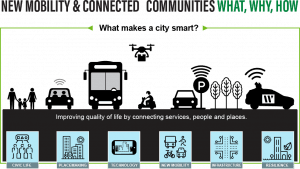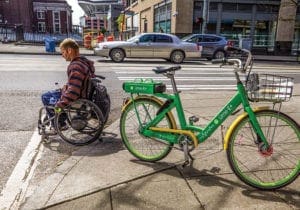
New Mobility and Connected Communities
WGI is tackling a new generation of solutions through its New Mobility and Connected Cities program.
Learn from award-winning professionals — explore our whitepapers, blogs, and the latest industry updates.
Join our dynamic organization of engineers, land surveyors, landscape architects, environmental scientists, and architects!
Talk to a market leader today! We’ll answer any questions you have about our professional services.

The following is an excerpt from Fast Company. Click here to read Rob Pegoraro’s full article.
The future of autonomous vehicles is coming slower than expected—maybe less than 10 miles per hour.
But delivery robots don’t need to move even that fast to take groceries to customers. Where they’re going, they may not even need roads, just sidewalks. And now their inhumanity isn’t a bug but a feature for pandemic-weary shoppers anxious for touch-free deliveries.
Promising though these bots are, they have gotten into mishaps, some as simple as the occasional case of a robot getting stuck before a kind human frees it. Sidewalks and streets themselves can complicate a delivery robot’s life, even though the Americans with Disabilities Act’s mandate for step-free surfaces should ease their path.
Lisa Nisenson, vice president for new mobility and connected communities at West Palm Beach design firm WGI, says that “mobility lanes” for vehicles slower than traditional cars may not answer this problem. Imagining one occupied by, among others, a 10-mph delivery robot, a 17-mph driverless shuttle, and an 18-mph electric bike, she asks, “Who passes whom, and is the road really wide enough?”
What happens when there are 10 or 20 of those?” asks Larco of the streets of tomorrow. Nisenson takes that question further: “What happens when there’s 100?”
Read the full article and find out more about what other mobility specialists had to say about the delivery robots and their impact here.

WGI is a national design and professional services firm leading in technology-based solutions for the construction of public infrastructure and real estate development. At WGI, we’re providing Tomorrow’s Infrastructure Solutions Today.

WGI is tackling a new generation of solutions through its New Mobility and Connected Cities program.

Presentations, awards, networking, and more! Here’s what happened at the 2021 FES | ACEC-FL Annual Conference in Palm Beach, FL.

Nick will support WGI in the development and implementation of technology-enabled strategies for innovation, sustainability, growth, and leverage opportunities for digital transformation.

WGI makes a very significant 41-spot jump from last year’s Hot Firm ranking of #76.

Micromobility has the potential to be an urban asset, but planners must act quickly to ensure people with disabilities are not left behind.

Webinar series recap! Lisa Nisenson and Angela Biagi discuss a groundbreaking new approach to designing and managing streets.
You’ve been searching for a place like WGI. We look forward to meeting you soon.
Sign up to receive emails to hear our latest news and achievements in our monthly newsletter.
Enter your zip code, and we’ll personalize your experience with local projects, office locations, team members, and more.
WGI supports its associates with meaningful opportunities for growth, strong benefits and perks, while we work collaboratively with clients and co-consultants to shape and improve communities.






WGI is a dynamic organization with opportunities nationwide for engineers, land surveyors, landscape architects, environmental scientists, and architects.